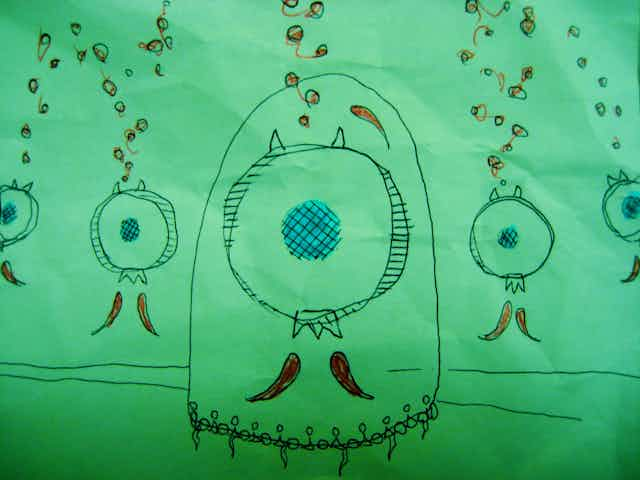A paper released today in the journal PNAS provides a new estimate of microbial abundance, in light of new information, from the sub-seafloor realm (the so-called “deep biosphere”). As such, we now have a dramatic reduction in the estimated total plant and prokaryotic (nucleus-free cells) biomass of Earth.
Previous estimates have suggested that the biomass of these unicellular organisms, which live in sediments beneath the sea floor, may account for as much as 86% of the total prokaryotic biomass and more than 30% of the total biomass of Earth.
The new data integrated with a broader consideration of relatively sparse existing information, significantly downsizes this estimate to less than 1% (~0.6%) of the total biomass of Earth, roughly equivalent to the microbial biomass estimates for seawater and soil.
Why has there been such a large reduction in the estimate? It turns out that microbial abundances in the sub-seafloor environment are much more variable than previously thought, by several orders of magnitude.
As with biomass variability at the earth’s surface, the deep biosphere has environments ranging from inhospitable desserts to tropical rainforests, and initial estimates of deep ocean microbial abundances were calculated from just a few sites of relatively high cellular abundances, around the ocean margins.
The study
The PNAS study by Jens Kallmeyer and colleagues considered microbial abundance data from 57 different locations across the world’s oceans, omitted 23 of those sites where the data were too “noisy” or erratic to be confidently extrapolated, and then examined the remainder in terms of geographic variables, in order to establish a three-dimensional model of cell distributions.
The data excluded mostly correlated with locally anomalous conditions, such as unusually high concentrations of organic food in sapropelic layers in the Mediterranean Sea, or sites where burial by submarine landslides skewed abundances.
Information from recent oceanographic research cruises to the North and South Pacific gyres (hemispherical-scale circulation of ocean currents in the north and south Pacific Ocean, driven by the uneven distribution of solar energy across Earth’s surface, and the rotation of Earth on its axis) revealed considerable heterogeneity in the abundance of microbial life in the ocean subsurface. The centres of these gyres were particularly deficient in microbial cells.
The authors investigated a number of geographical variables at each of the remaining 34 sites and found the strongest correlations between cell abundances and both the rate of sediment accumulation and distance from land.
The primary source of food for these microbes is organic matter, from which they obtain metabolic energy through electron transfer as the carbon and hydrogen (and nitrogen and phosphorous, as well as many element of less abundance in living matter) are oxidised.
This is the process of decay, which allows recycling of the basic building blocks of the organic matter. Organic matter in the oceans comes from two main sources – the overlying surface ocean where floating, mainly single-celled, plants and animals live and eventually die and sink to the sea floor, or washed in from the land.
From these variables the researchers constructed a 1º-by 1º-grid of organic matter availability across the world ocean, taking account of the rate of burial of the organic matter, and the thickness of sub-seafloor sediment.
The latter provides a maximum depth for the existence of microbial life in the sediment based on a geothermal gradient of 30ºC per kilometre. This sets a maximum thickness of sediments at 4,000m using the currently known temperature limit for life of 122ºC.
From this volumetric model the paper’s authors estimate the number of cells in the ocean subsurface to be 2.9 x 1029. Although this is a very large number, it represents a significant decrease over the former estimate, and results in a reduction in the estimate of the total plant plus prokaryotic biomass of Earth by as much as 40%.
By way of comparison, the total number of stars in the universe is currently estimated at around 3 x 1023 – around a million times fewer.
Need to know
Why is this knowledge important? For two main reasons.
The metabolic processes utilised by these microbes are necessary for the existence of higher life forms (eukaryotes) on Earth. They carry out a multitude of chemical transformations that result in a highly efficient recycling of life resources. Exactly what role is played by the deep biosphere in this symbiosis is yet to be fully understood.
The environments in which these deep biosphere organisms live is quite different from the more familiar surface environment, and as such, they provide many new and different scenarios in the search for extra-terrestrial life.
Estimates are just that - they have an associated error and as more data become available, the error gets smaller and smaller. Collecting 34 samples sites from the entire ocean can only be considered a good start.

